When the joints hurt, the person feels discomfort and tries to get rid of the discomfort as soon as possible by taking medication to remove them. However, pain can serve as a precursor to a serious illness, signaling its onset. It is recommended that you consult a doctor in time to avoid the consequences that can lead to delay and only symptomatic treatment.
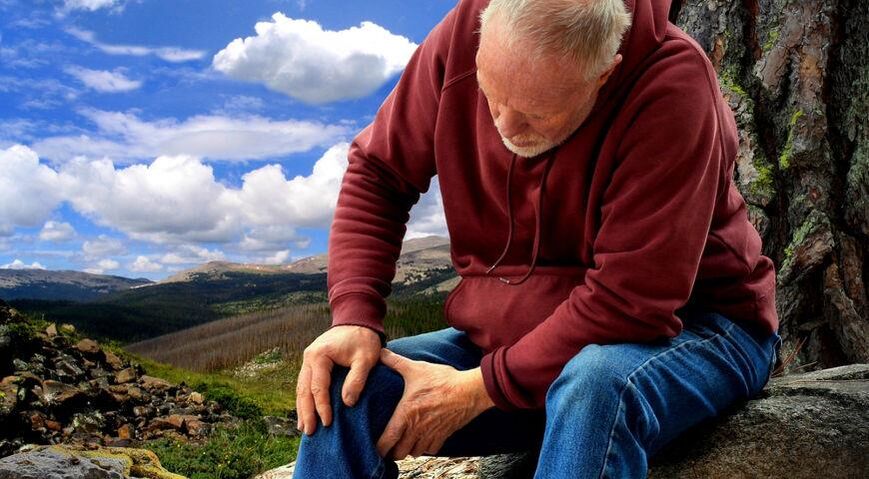
Causes and symptoms
All diseases of the musculoskeletal system are associated with symptoms of pain of various natures. Pain is a sign that a destructive pathological process is taking place in the body. Only a clinical examination can accurately diagnose the cause. It is necessary to go to the hospital if the pain in the joints is similar to the pain in the back, and the movement of the limbs is difficult. Bumps, sprains, sprains, fractures and other injuries require medical care. When all joints ache, polyarthritis is suspected. If the patient feels one type of pain, then another, the cause may be a complex lesion of the motor apparatus, including ligaments and muscles, as well as disorders in the central nervous system. The cause of inflammation of the joint nodes is an infection that has entered the body (ARVI, influenza), hypothermia. The most commonly diagnosed patients with pain are:
- arthritis, arthrosis and coxarthrosis;
- rheumatoid diseases;
- bursitis and tendinitis;
- osteomyelitis, osteoporosis;
- bone tuberculosis;
- damage to the vascular system and central nervous system;
- osteochondrosis;
- oncological diseases.
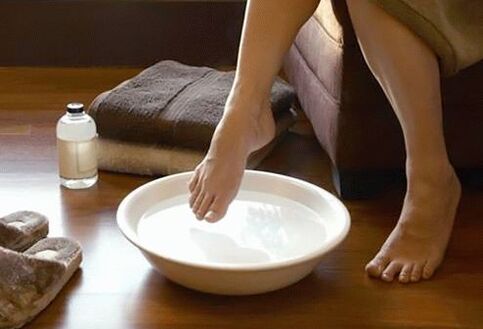
If your joints only hurt in the evening after a hard day's work, you can alleviate the problems with the help of healing soothing ointments or folk remedies. Fatigue does not mean illness. It is also necessary to exclude the factor of stress and nervous tension. When you decide to go to the hospital, you need to pay attention to the pain-related symptoms, such as:
- tissue swelling;
- skin discoloration;
- stiffness of movement;
- raising the temperature to subfebrile and higher;
- bone pain before sudden weather changes;
- crunching when moving.
Types of pain
The patient often feels that the joints themselves are sore, although the discomfort may be an echo of other diseases. Conversely, joint pain in the back can be misinterpreted as symptoms of other diseases. The initial pain in the hip joint often occurs in the abdomen, and in women it can be understood as a sign of approaching menstruation. Cardiac colic on the left side of the chest can cause painful numbness in the arm from shoulder to elbow. Phantom pain can radiate to the cervical region and shoulder girdle after wisdom tooth extraction. However, there is a category of exclusively joint pain, which is divided into the following types:
- joint stiffness in the morning and evening;
- sharp pain, radiation or pain;
- migrating body aches;
- feeling as if the joint "hurts";
- short-term pain.
What is dangerous?
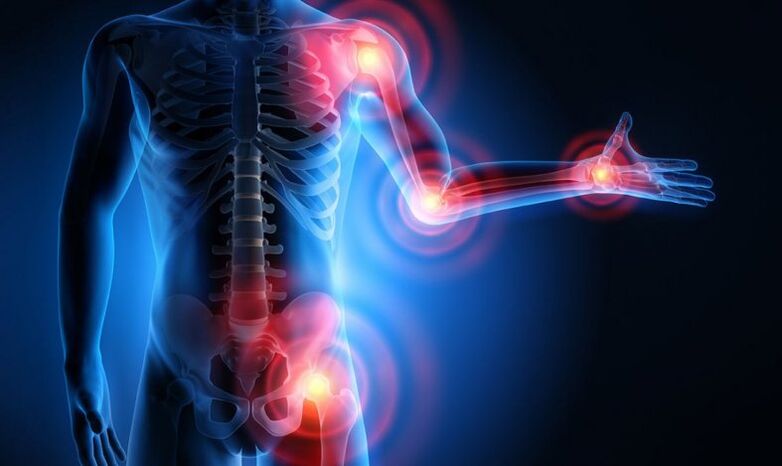
Acute pain in all large joint nodes is a sure sign of a serious inflammatory, infectious and degenerative process that can lead to limited motor function and disability. If terrible, terrible pain in the joints radiates to the leg or arm, it can mean complete destruction of the node and the need for prosthetic surgery. Ignoring mild pain leads to worsening of harmful processes and leads to complications all the way to oncology. Inflammation moves from one node to another, affecting all large joints. Only timely seeking medical help will prevent dystrophic and inflammatory processes that destroy joints and spine, and thus a dangerous disease.
First aid
When joints ache and walking hurts, you need to take immediate action to eliminate the discomfort. Until the cause is clarified, it should be limited to symptomatic therapy aimed at eliminating or alleviating the syndrome. First of all, it is necessary to provide rest to the diseased limb and, if possible, remove part of the load using a support bandage. In case of muscle spasm and convulsions, muscle relaxants are taken, and joint pains are removed with analgesics. The blockade will help to quickly relieve pain in the knee and ankles.
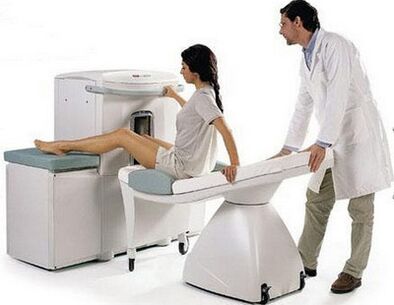
Examination and diagnostic methods
Joint diseases, as well as other ailments that cause pain, can be determined by a comprehensive examination, which consists of an external therapeutic examination, laboratory tests and hardware diagnostics. First of all, the doctor examines the affected area for the presence of manifestations of inflammatory and infectious processes in the joints and adjacent tissues: is there swelling, rash on the body, is there pain on palpation, is there itching, what color is the skin. The following are instrumental methods:
- radiography;
- MRI;
- ultrasound;
- arthroscopy.
Clinical trials are necessary when an inflammatory or infectious process is suspected in order to determine its cause. Synovial fluid samples are also taken in cases of confirmation of degenerative processes in the joint sac. It is sometimes advisable to do additional allergy tests and autoimmune tests to determine individual reactions and hereditary predisposition to disease.

What to do and how to treat?
Pain in many joints throughout the body is a marker that indicates the presence of an injury (perhaps chronic or hidden) or a disease that has entered a progressive stage. First of all, you need to understand what is hurting and situationally eliminate the symptom. Feeling an increase in pain, immediately contact the clinic, where the patient will go to the study, and then get recommendations for treatment.
The basis of therapy is always drug therapy, at the same time as performing physiotherapy. Other methods are acceptable as adjuncts and cannot replace pharmaceutical and hardware treatment.
Medical preparations
Affected joints are most commonly treated with conservative drug therapy, including NSAIDs, pain medications, medications, chondroprotectors, less commonly antibiotics, and medications to improve blood circulation. Each case requires a special choice of therapy. Patients are prescribed tablets, injections and drops.
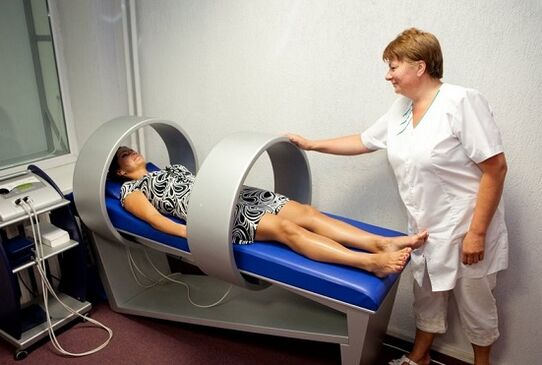
Physiotherapy treatment
Joint pain is effectively neutralized by hardware methods. Electro- and magnetic procedures are the most popular. The standard course consists of 10 sessions. It is necessary to be treated in a clinic. In addition to hardware treatment, mud and balneological are also attributed, radon baths, paraffin with ozokerite, and healing mineral mud are especially good. For therapy once a year it is necessary to undergo sanatorium treatment.
Surgical methods
When the joint cannot be cured, it needs to be replaced with a prosthesis. To eliminate severe pain in the ankles, doctors must first remove the severely damaged articular cartilage, and then insert an artificial one. Prosthetics can be partial or complete, depending on the degree of wear of bone heads and cartilage, the presence of osteophytes.
Exercise and massage
Therapeutic exercise will help strengthen the muscular corset. Pilates and yoga will make the body more flexible, the joints will gain increased mobility, which will prevent the development of osteophytes and fluid retention, the formation of deposits of salt and calcium.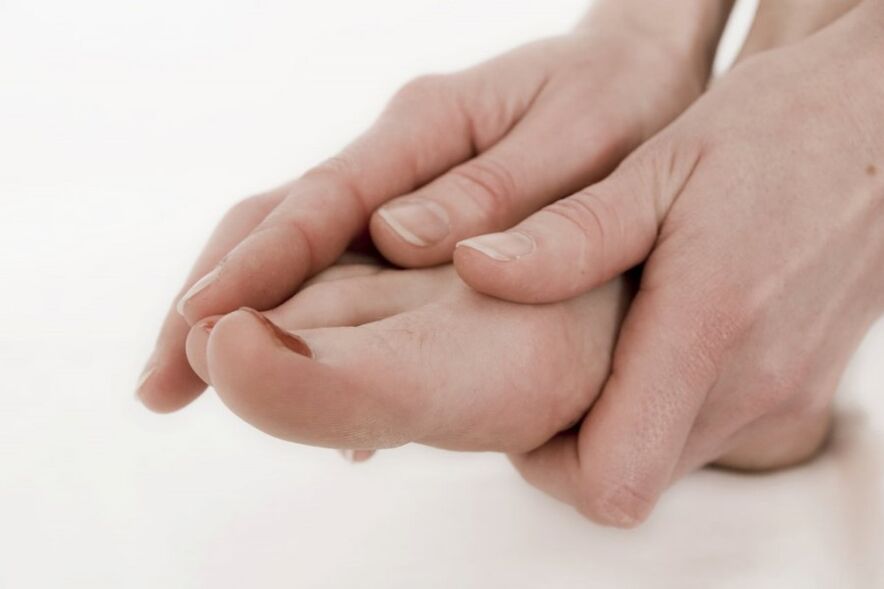 Exercises of strength, resistance and flexibility are performed alternately, without sudden movements. The optimal course is chosen by the coach. In the morning and in the evening at home, it is recommended to perform a light complex of inclines and turns to stretch the joints and muscles, especially when sitting for a long time.
Exercises of strength, resistance and flexibility are performed alternately, without sudden movements. The optimal course is chosen by the coach. In the morning and in the evening at home, it is recommended to perform a light complex of inclines and turns to stretch the joints and muscles, especially when sitting for a long time.
When the feet suddenly become sore after a long walk, a massage combined with warm herbal baths will help alleviate the discomfort. Massage and acupuncture are allowed at home, without going to the clinic, but under the condition that the procedures are performed by an experienced doctor, otherwise unaesthetic traces can remain on the skin.
Folk recipes
On the one hand, the effectiveness of non-traditional methods has not been clinically proven, but on the other hand, many patients successfully alleviate pain with the help of natural home remedies that they make themselves. If the joints hurt, they are smeared with honey cream with the addition of hot peppers and bee venom. Swelling that occurs in diseases of the joints is removed by rubbing alcohol and compresses based on dandelion and wild chestnut flowers. Cold pressed olive oil has an analgesic effect. When practicing traditional medicine, you must keep in mind that many ingredients can cause allergies and skin damage. Folk remedies are acceptable as symptomatic therapy, but not as the main course of therapy.
Preventive measures
In spring and winter, the lack of vitamins leads to a weakening of the nutrition of the joints, making them susceptible to inflammatory processes. It is necessary to take vitamin complexes regularly. To prevent joints, you can drink dietary supplements with a chondroprotective effect. Once a month, it is recommended to visit the massage room to maintain muscle tone, go through a mini session of 5 procedures. After the injury it is mandatory to wear a bandage, use a cane. If the pain began to recur after treatment, then it is better to see a doctor immediately.























